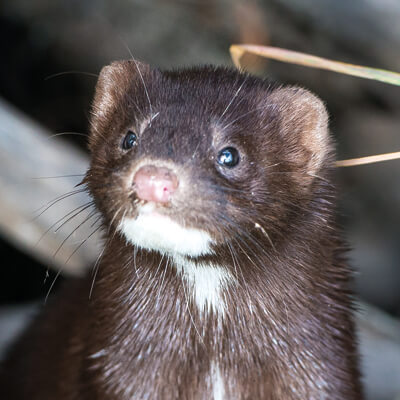The World Health Organization has stated that the coronavirus “most likely” jumped from wildlife to humans. Though the precise species of origin is still unknown, the risk of zoonotic transmission, or continued crossing between species, is real. What this means for wildlife, pets, and human health is somewhat mysterious, and researchers at Penn are working to shed light on the risks of species-to-species disease movement, while mitigating further transmission.
“It’s scary to think of the spread of a disease from wildlife to humans because if there is spillover back into wildlife populations that could make it hard to contain,” said Dr. Eman Anis, assistant professor of microbiology.
Last year, upon learning that bats were a leading suspect in passing COVID-19 to humans, Anis was worried about the possibility of bats in rehabilitation facilities, where they interact daily with humans, being infected. “This raised some concern about releasing those bats into the wild early in the pandemic,” said Anis. The risk was that they could potentially establish a new reservoir of the virus in wild bats.
She quickly rolled out an experiment to test samples of guano — bat poop — for SARS-CoV-2, the virus that causes COVID-19. Testing 100 bats in rehab facilities around Pennsylvania, Anis was relieved to find all were negative. But the experience also enabled her and her colleagues to refine a diagnostic panel, shared in the Journal of Veterinary Diagnostic Investigation, which may be applied in future testing.
Assuming SARS-CoV-2 did move from bats to humans, the transmission chain didn’t end there, species-wise, as evidenced by the reports of pets and zoo animals becoming sick with COVID-19. Dr. Elizabeth Lennon, the Pamela Cole Assistant Professor of Internal Medicine, has been testing pet dogs and cats for coronavirus, to understand the spread between humans and animals and further study virus’s behavior when it crosses species. Lennon and coronavirus expert Dr. Susan Weiss of the Perelman School of Medicine are studying viral samples from these pets in Penn’s Biosafety Level-3 laboratory.
So far, research has supported the idea that both cats and dogs are susceptible to COVID-19, although less so than humans. Cats appear more susceptible than dogs. “People are driving the spread of this disease, not pets. But we do want to ask if pets, in certain circumstances, may be more susceptible and shed large amounts of virus.” said Lennon. The findings could help inform disease prevention strategies in animal shelters, veterinary facilities, and even pet owners’ homes.
The Mink Crisis
 Perhaps no domesticated animal species has borne a greater burden from COVID-19 than mink. Seventeen million were culled in Denmark in November 2020 after outbreaks were identified on hundreds of mink farms.
Perhaps no domesticated animal species has borne a greater burden from COVID-19 than mink. Seventeen million were culled in Denmark in November 2020 after outbreaks were identified on hundreds of mink farms.
Sequence data showed the virus had spread from farm workers to mink and then back again, acquiring mutations as it spread. With new, more contagious variants steadily making their way around the globe, the mink outbreak generated understandable fear.
“I think they were taking precautions to protect human health,” said Dr. Scott Weber, V’97, a veterinarian with Penn Vet’s Wildlife Futures Program. “With vaccines coming out, they didn’t want any possibility that a new mutation would make any vaccine less effective.”
To ensure mink farms in Pennsylvania do all they can to protect against infection, the Wildlife Futures Program, a joint effort between Penn Vet and the Pennsylvania Game Commission, helped develop a threat assessment for the state’s mink farms, offering updated information about what was known about the disease to date, as well as guidance to reduce risks.
Vaccinating Humans and Animals
As vaccines slowly roll out to humans, Penn Vet researchers are collaborating with medical scientists, including Penn Medicine’s Dr. Drew Weissman, who pioneered the mRNA technology behind the Moderna and Pfizer COVID-19 vaccines, to develop animal vaccines to support agricultural industries and perhaps pets as well.
“We still have a lot to learn about this virus,” said Anis. “While we learn, we need to be taking all the precautions that we can.